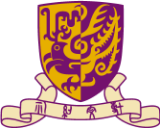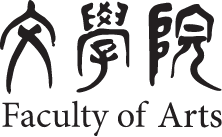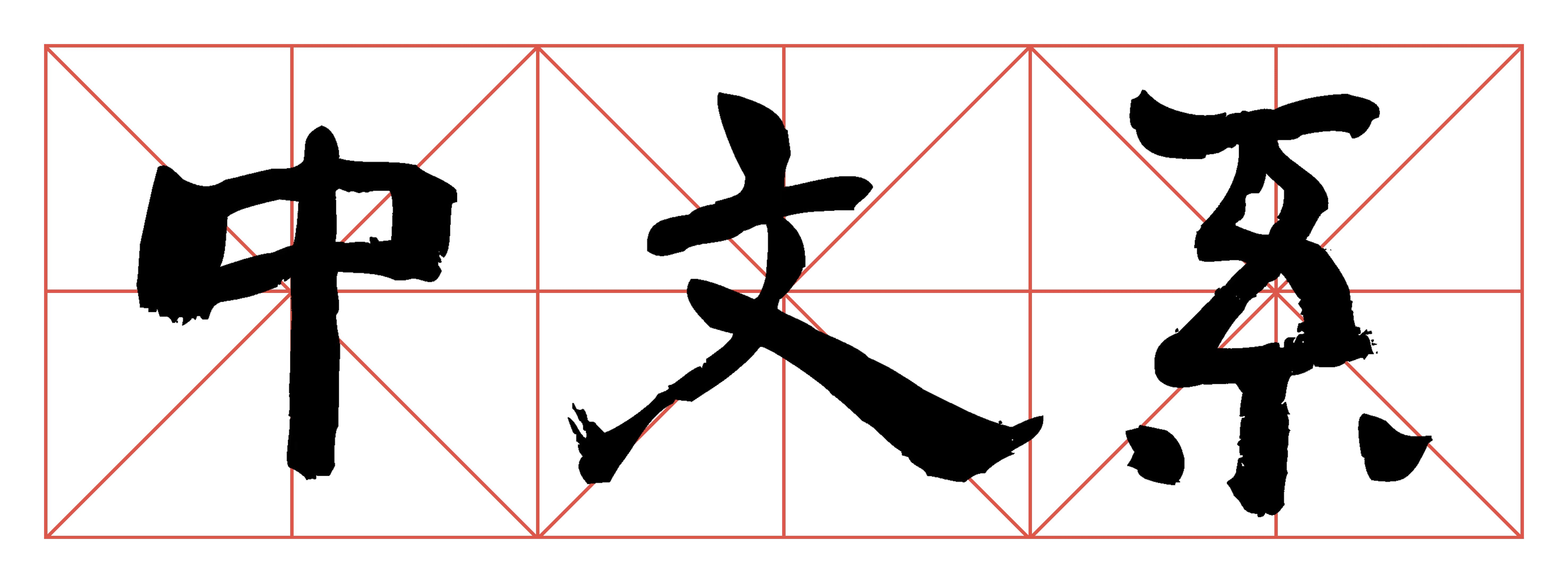
The “Language Map of CUHK” (中大文學地圖) provides a platform for posting and reading creative articles on various locations within CUHK campus. It aims at promoting the creative atmosphere in campus and enhancing students’ observation and descriptive skills, which in turn support the teaching and learning of the University’s core course “University Chinese”(大學中文).
The “Language Map of CUHK”(中大文學地圖) provides a platform for posting and reading creative articles on various locations within CUHK campus. It aims at promoting the creative atmosphere in campus and enhancing students’ observation and descriptive skills, which in turn support the teaching and learning of the University’s core course “University Chinese”(大學中文). The “Language Map of CUHK” includes dozens of creative articles on CUHK campus from famous writers, each with annotations to help students understand the beauty of wordings in the articles.
The “Language Map of CUHK” hopes to establish a platform for CUHK teachers and students to add their creative writings ahout the campus. They can express their feelings and thoughts on different landscapes in CUHK. After downloading the “Language Map of CUHK” App, teachers and students can submit their articles by tapping on the “Add Landscape” (加入地景) button on the right side of the homepage or tapping on the “Writing Your Words”(舞文弄墨) button on any any marked landscape of the cartoon drawing campus.
Let’s leave our literary works all over CUHK via “Language Map of CUHK”!
CUHK users can submit creative works through the following link to express their feeling through writing about the life and the scenery of the university. Those works will be updated on the App after screening by our team.
For enquries, please send a email to cltdc@cuhk.edu.hk.
Download “Language Map of CUHK”: https://campusapps.itsc.cuhk.edu.hk/store

CanTONEse is an App which aims to provide Non-Cantonese native speaking students with an online learning platform to enhance their Cantonese learning. Instead of helping the non-Cantonese native students memorize the tone of every character, the app try to emphasize the general difference between 6 Cantonese tones. Teaching materials with recordings, self-assessment exercises, daily conversations and an interactive game are available in the App.
CanTONEse is an App which aims to provide Non-Cantonese native speaking students with an online learning platform to enhance their Cantonese learning. Instead of helping the non-Cantonese native students memorize the tone of every character, the app try to emphasize the general difference between 6 Cantonese tones. Teaching materials with recordings, self-assessment exercises, daily conversations and an interactive game are available in the App.
Upon the completion of the self-learning material of the app, non-Cantonese native speaking students should acquire the essential concepts about the lexical tones in Cantonese. They will be able to recognize the Cantonese tonal variation, and hence it can raise their confidence in oral communication. It is also expected that students will be more aware of the accuracy of the Cantonese pronunciation.
Note for iOS users:
Please establish trust for the APP by the following steps:
Tap Settings > General > Profiles or Profiles & Device Management > Enterprise App > The Chinese University of Hong Kong > Establish trust for CUHK
Reference: https://support.apple.com/en-hk/HT204460
Download CanTONEse: https://campusapps.itsc.cuhk.edu.hk/store/login.aspx

「普通話水平模擬測試」根據「普通話水平測試」(PSC) 設計,採用語音自動評測技術,按照普通話水平測試的標準為使用者評分,並會為使用者提供列出主要語音問題的「診斷報告」。
“Putonghua Proficiency Mock Test” is an outsourcing self-learning platform, which aims at offering a self-learning tool for students in need. This system serves as a supplementary learning tool of the University Chinese courses and the test result will not be considered as a part of the assessment of the courses. Students can make use of this system according to their needs. Please read the following details before entering the system:
1. Instruction
The design of “Putonghua Proficiency Mock Test” is based on the Putonghua Shuiping Ceshi (PSC). It adopts an automatic evaluation technology in pronunciation and grades the users according to the standards of PSC.
Moreover, it will generate a report which lists the main pronunciation problems of the users. However, the system might be affected by technical problems such as noise or hardware configuration problem. Therefore, the diagnostic report is for reference only. Please do not take this Mock Test as a formal PSC assessment.
2. Purpose of the mock test
Artificial Intelligence (AI) is adopted to assist students in evaluating their Putonghua level and it enables students to correct their pronunciation. Thus, students can plan a feasible self-learning progress.
3. Follow-up session
After completing the Mock Test, the system will generate a “Diagnostic Report” which is based on the user’s phonological performance. The report lists the main pronunciation problems and examples; the pronunciation will be graded on the basis of accuracy for students’ reference. If students want to further improve their pronunciation problems, they can make an appointment for the consultation session through “Learning Chinese outside Classroom” website.
4. Registration
Students of CHLT1100 University Chinese I and CHLT1200 University Chinese II may register through the ‘Self-assessment of language performance’ 語文/語言能力自我評估 on Blackboard. Other CUHK students have to send a request to the Chinese Language Teaching Development Centre for registration. Students should send the email with their full name, student ID, the faculty and/or the programme, and the year of attendance to the Centre. The Centre will register the students as ‘private users’. After receiving the login ID and default password from the Centre, students should change the password immediately.
5. Important notes
i. “Putonghua Proficiency Mock Test” was developed by iFLYTEK. The Department is granted the access to the system only and bears no responsibility for the content and the technical details of the system. The corresponding responsibilities belong to iFLYTEK.
ii. As “Putonghua Proficiency Mock Test” is an outsourcing platform, users need to download the system files using CUHK VPN or CUHK Internet. Users should be aware of the security issues regarding the system. Please send an email to the Centre if you have any concern. Alternatively, students may be arranged a designated computer for completing the test.
iii. The users should read carefully the Instructions mentioned above before entering the system.
Start “Putonghua Proficiency Mock Test”: http://www.chlt-mockpsc.com/

This website is established by the Department of Chinese Language and Literature and The Independent Learning Centre (ILC). It contains eight chapters, including words, syntax, style and rhetoric of fundamental knowledge of Chinese grammar.
The website contains eight chapters, including words, syntax, style and rhetoric of fundamental knowledge of Chinese grammar. The website provides various online exercises for users in order to evaluate their self-learning efficiency. The “note-function” button which can record the learning objectives or difficulties is also designed to help student in revision.
This website is established by the Department of Chinese Language and Literature and The Independent Learning Centre (ILC). Student can discuss the learning progress with their Lecturers. They can also make appointment for a consultation session with the ILC teaching staff.
If you have any questions please contact us by email.
Access the Chinese Grammar website:

Multiple online dictionaries
- Multi-function Chinese Character Database
Established by Research Centre for Humanities Computing of the Research Institute for the Humanities, The Chinese University of Hong Kong
- Gwoyeu Tsrdyan(Chinese Dictionary)
Established by Ministry of Education, Taiwan
- Suo Wen Jie Zi (Chinese Dictionary)
Established by Academia Sinica, Taiwan
- Han Dian(Chinese Dictionary)
Anonymous work from Mainland China
- Dictionary of Chinese Idioms
Established by Ministry of Education, Taiwan
- Dictionary of Chinese Variants
Established by Ministry of Education, Taiwan

Multiple online eText
- Chant
Content coverage: Jiaguwen, Jianbo, Jinwen, Pre-Han and Han Transmitted texts, Six Dynasties Transmitted Texts and Leishu(encyclopaedia)
- Database of Chinese Classic Ancient Books
Content coverage: Over 10,000 kinds of Chinese classic ancient books.
- The Scripta Sinica database
Content coverage: Over 1,000 titles of materials pertaining to the traditional Chinese classics
- Siku Quanshu
Content coverage: Over 3,000 kinds of traditional Chinese classics from Ancient Zhou Dynasty to the Early-Qing Dynasty
- Hong Kong Literary Scenes
Content coverage: Creative works about Hong Kong Literary scenes from famous local writers
- Chinamaxx Digital Libraries
Content coverage: Over 700,000 Chinese books published in China since 1949
- Apabi
Content coverage: Over 60,000 kinds of books
- Yongyue Dadian
Content coverage: Over 800 kinds of books or materials from Yongle Dadian
- Sibu Congkan
Content coverage: Rare books from Song Dynasty to the Early-Qing Dynasty
- Dachengdata
Content coverage: Over 50,000 kinds of books published in the period of Republic of China

Multiple online elearning platforms
- Blackboard
Learning Management System of CUHK
- Keep
A Knowledge & Education Exchange Platform developed and initiated by CUHK
- Independent Learning Centre
Provides online learning materials of Cantonese and Mandarin.
Cantonese: 粵語網絡課堂, 粵語拼音速遞, Online Cantonese, 港式粵語速遞
Mandarin: 普樂網︰初級普通話, 普樂網︰中級普通話, Everyday Chinese
- Coursera
Online platform for open courses from different universities
- eLearning platform of RTHK
Online platform for different kinds of eLearning materials provided by RTHK
- eLearning platform for Chinese Culture(RTHK)
Online platform for eLearning materials of Chinese Culture
- NTU open courseware
Provides different kinds of open courses offered by National Taiwan University



